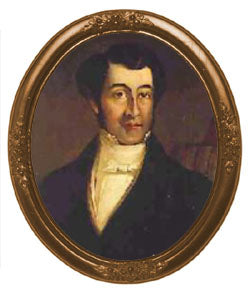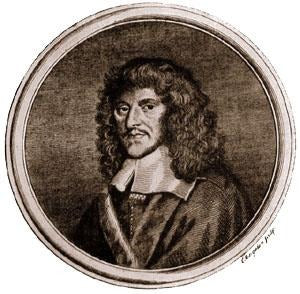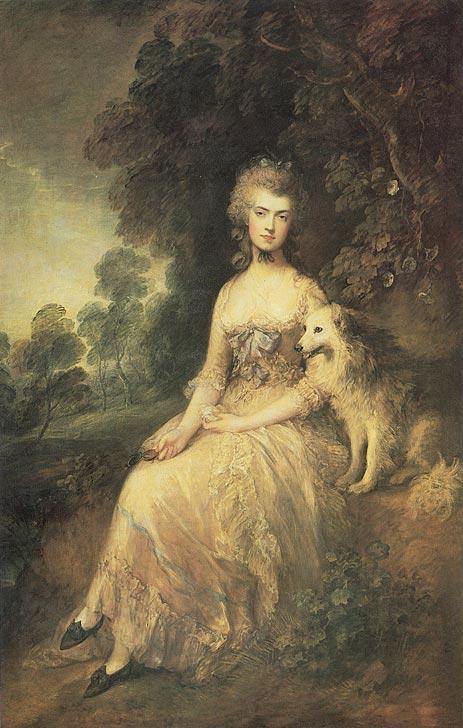Joseph Bramah: Inventor Extraordinaire
Scarcely any thing was talked of the whole day, or next morning, but their visit to Rosings. Mr Collins was carefully instructing them in what they were to expect, that the sight of such rooms, so many servants, and so splendid a dinner might not wholly overpower them. When the ladies were separating for the toilette, he said to Elizabeth, "Do not make yourself uneasy, my dear cousin, about your apparel. Lady Catherine is far from requiring that elegance of dress in us, which becomes herself and daughter. I would advise you merely to put on whatever of your clothes is superior to the rest, there is no occasion for any thing more. Pride and Prejudice
 Joseph Bramah (April 13, 1748 – December 9, 1814), born Stainborough Lane Farm, Wentworth, Yorkshire, England. He was an inventor and locksmith. He is best known for having invented the hydraulic press. Along with William George Armstrong, he can be considered one of the two fathers of hydraulic engineering. Bramah was the second son in the family of three sons and two daughters of Joseph Bramma (note the different spelling of the surname), a farmer, and his wife, Mary Denton. He was educated at the local school in Silkstone and on leaving school he was apprenticed to a local carpenter. On completing his apprenticeship he moved to London, where he started work as a cabinet-maker.
Joseph Bramah (April 13, 1748 – December 9, 1814), born Stainborough Lane Farm, Wentworth, Yorkshire, England. He was an inventor and locksmith. He is best known for having invented the hydraulic press. Along with William George Armstrong, he can be considered one of the two fathers of hydraulic engineering. Bramah was the second son in the family of three sons and two daughters of Joseph Bramma (note the different spelling of the surname), a farmer, and his wife, Mary Denton. He was educated at the local school in Silkstone and on leaving school he was apprenticed to a local carpenter. On completing his apprenticeship he moved to London, where he started work as a cabinet-maker.
In 1783, he married Mary Lawton of Mapplewell, near Barnsley, and the couple set up home in London. They subsequently had a daughter and four sons. The couple first of all lived at 124 Piccadilly, but later moved to Eaton Street, Pimlico.

His first successful invention whilst in London was an improved water closet. He found that the current model of water closet being installed in London houses had a tendency to freeze in cold weather. He designed a new model in which the usual slide valve was replaced by a hinged flap that sealed the bottom of the bowl. He obtained a patent for his design in 1778 and began making water closets at a workshop in Denmark Street, St Giles The design was a success and production continued well into the 19th century. His original water closets are still working in Osbourne House, Queen Victoria's home on the Isle of Wight.
After attending some lectures on technical aspects of locks, Bramah designed a lock of his own. He received a patent for his new lock in 1784. As a result, Bramah started the Bramah Locks Company at 124 Piccadilly. which survives today.
 The locks produced by his company were famed for their resistance to lock picking and tampering, the company famously had a "Challenge Lock" which was displayed in the window of their London shop from 1790 mounted on a board containing the inscription:
The locks produced by his company were famed for their resistance to lock picking and tampering, the company famously had a "Challenge Lock" which was displayed in the window of their London shop from 1790 mounted on a board containing the inscription:
The artist who can make an instrument that will pick or open this lock shall receive 200 guineas the moment it is produced.
The challenge stood for over 60 years until, at the Great Exhibition of 1851 an American locksmith by the name of Alfred Charles Hobbs was able to open the lock and, following some argument about the circumstances under which he had opened it, was awarded the prize. Hobbs attempt still took him some 51 hours, spread over 16 days.  The Challenge Lock is in the Science Museum in London.
The Challenge Lock is in the Science Museum in London.
An examination of the lock shows that it has been rebuilt since Hobbs picked it, originally it had 18 iron slides and 1 central spring. It was rebuilt to have 13 steel slides, each with its own spring. Bramah received a second patent for a lock design in 1798. Partly due to the precision requirements of his locks, Bramah spent a lot of his time developing tools to assist him in various manufacturing processes. He relied heavily on the expertise of Henry Maudslay whom he employed in his workshop from the age of 18. Between them they created a number of innovative machines that made the production of Bramah's locks more efficient, but which were also applicable to other fields of manufacture. Just before Bramah died, his workshops also employed Joseph Clement who among other things made several contributions in the field of lathe design.

Bramah's most important invention was the hydraulic press. The hydraulic press depends on Pascal's principle, that pressure throughout a closed system is constant. The press had two cylinders and pistons of differing cross-sectional areas. If a force was exerted on the smaller piston, this would be translated into a larger force on the larger piston. The difference in the two forces would be proportional to the difference in area of the two pistons. In effect the cylinders act in a similar way that a lever is used to increase the force exerted. Bramah was granted a patent for his hydraulic press in 1795. Bramah's hydraulic press turned out to have many industrial applications and still does to this day. At the time hydraulic engineering was an almost unknown science, and Bramah (with William George Armstrong) was one of the two pioneers in this field.
The hydraulic press is still known as the Bramah Press after its inventor. Bramah was a very prolific inventor. Not all of his inventions were as important as his hydraulic press. They included: a beer engine (1797), a planing machine (1802), a paper-making machine (1805), a machine for automatically printing bank notes with sequential serial numbers (1806), and a fountain pen (1809). Bramah died at Pimlico on 9 December 1814 after catching a cold which turned to pneumonia. He was buried in the churchyard of St Mary's, Paddington.
If you don't want to miss a beat when it comes to Jane Austen, make sure you are signed up to the Jane Austen newsletter for exclusive updates and discounts from our Online Gift Shop.



1 comment
Need more info about where he died and how he died
Jack Dunnigan
Leave a comment
This site is protected by hCaptcha and the hCaptcha Privacy Policy and Terms of Service apply.